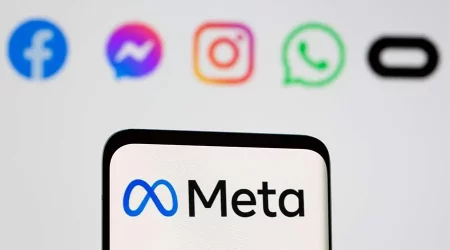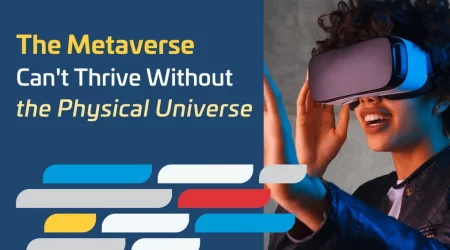What is Metaverse in Blockchain?
Table of Contents
What is Metaverse in Blockchain?
When you first hear about the Blockchain, you might wonder what “metaverse” means. A metaverse is a virtual world where people interact with each other. This virtual world is decentralized and backed by blockchain technology. It is a way to make payments, exchange goods and keep data secure. You can also create a virtual world for gaming, where you can play with hundreds of people simultaneously. The technology behind a metaverse is already in development, so it is only a matter of time before it catches on.
Metaverse platforms are based on fungible tokens and allow users to buy and sell virtual assets. These platforms facilitate democratic governance and interoperability between systems. While the full extent of the Metaverse is not yet known, there is a general idea of how it will work. Let’s take a look at some of the most exciting Metaverse examples. Read on to learn more about these projects. You can also find out more about the Metaverse blockchain and the potential for its usage.
Cryptocurrency-powered economy
The energy required for a Cryptocurrency-powered economy is staggering. According to the University of Cambridge, Bitcoin machines require more power than the entire country of the Netherlands, which has 17 million people. The Bitcoin machine uses more electricity than these 17 million people in one year! It is no wonder that this cryptocurrency is so expensive, with the currency’s current value hovering between $41,300 and $50,000. But is this energy consumption justified?
One primary concern is the energy needed to mine cryptocurrency. Bitcoin requires an unbelievable amount of energy – enough to power a house for a month! But how energy-efficient is this industry? A study by the University of Cambridge found that mining a single bitcoin can use more energy than the entire population of Finland, a nation of 5.5 million. And this energy usage is increasing exponentially, so it is clear that it’s time to start thinking about the long-term impacts of this technology.
Digital collectability
A vital component of the blockchain is the concept of digital collectability. Essentially, a digital collectible has a value not based on its biological value. One example is poker chips, which have no cash value and must be exchanged for real money after the game. Another example is the tokenization process, which replaces sensitive data with a nonsensitive placeholder that can be transmitted via API calls or batch files. This allows for greater flexibility in storing and transferring the tokens.
A digital collectible, or ‘collectible,’ is a copy of a digital item that is not freely available. It typically has a visual element but can also be anything represented in 1s and 0s, like a music file or video. Digital collectibles are backed by a public ledger, such as the Tezos blockchain. Unlike ordinary data, they are not easily copied, so they are highly sought-after by collectors, who can ensure that their digital art is limited to one or a few copies.
Metaverse platforms are based on fungible tokens.
Crypto-based metaverses use the power of blockchain infrastructure and fungible tokens to make digital goods more accessible and secure. Metaverse tokens and digital goods are linked to the broader crypto economy through NFT marketplaces and DEXs. These tokens have real-world value, and holders of Metaverse coins can trade them on NFT marketplaces. In other words, they can command real-world values for in-world investments.
For example, a company may ban a user from the metaverse or remove a user’s digital painting from its platform. Despite these negative consequences, the NFT is still on the blockchain and retains the original identification code. Although digital painting no longer has any value, it’s functionally useless and financially worthless. This is why metaverse companies should avoid deleting an NFT from their systems.
The future of blockchains is changing. Cryptocurrencies and the metaverse are joining forces. Cryptocurrencies provide the technology to create a virtual world where people can live, play, and work. However, there are concerns surrounding the metaverse and how it will be regulated. The first step in implementing a metaverse is establishing an ethical and legal framework. The following sections discuss some of the issues that will arise.
A complete metaverse would most likely be blockchain-powered. In addition to allowing people to own digital assets, blockchain technology also ensures that the tokens are non-fungible. This is because these assets do not belong to a central authority. The user assets are decentralized, peer-to-peer, and non-fungible. A metaverse that supports these assets is a good fit for the development of blockchain technology.
Read More: Is It A Good Decision To Buy Virtual Land In Metaverse
Democratic Governance
In the future, metaverses on the blockchain could enable a system where everyone can vote with their wallet. This would give users a democratic voice in the decision-making process. For example, blockchain nations could implement basic incomes for all their citizens through PoS staking. While it may belong to traditional nation-states to introduce such policies, blockchain nations can already implement them. In this way, blockchain can become the next big thing in democratic governance.
One of the most significant advantages of using blockchain is decentralized. The blockchain allows for more secure, decentralized data. This is particularly important for the electronic voting system. But incorporating blockchain technology into our electronic voting system is still a hot topic. Some governments and representatives are hesitant to integrate this technology entirely, but this concept may become a reality as the world evolves. For now, we can imagine metaverses as the future of the Internet.
Buy and Sell Virtual Assets
In crypto-metaverses, people can purchase and sell a range of virtual assets. Metaverses are digital environments incorporating blockchain technology and cryptocurrencies such as Bitcoin, Ethereum, and Litecoin. Some crypto metaverses have been around for a long time and have even incorporated large corporations, such as Sotheby’s. The blockchain-based game Decentraland features a multi-room virtual art gallery and regular live music and conference events.
Many new platforms are powered by blockchain technology and provide a platform for creating new decentralized digital assets. Blockchain records are difficult to manipulate and are constantly checked by a peer-to-peer network. While blockchain is best known for underpinning cyber-currencies such as Bitcoin, it has many other uses. Walmart’s recent trademark filings suggest that it intends to sell virtual goods and virtual currency in its metaverse.




Leave a Reply